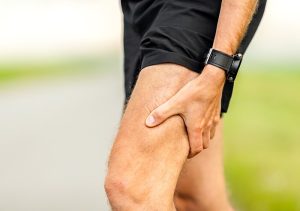How Physical Therapy Can Help a Soft Tissue Injury
Soft tissue injuries result from muscle, ligament, or tendon trauma. They can occur anywhere in your body—from the top of your head down to your toes—but they’re most common in less-visible areas like your hips and knees. Twin Boro Physical Therapy can help with these types of injuries by providing therapy for injured and weak muscles. Read more to know how physical therapy can help patients who have suffered soft tissue injuries restore their range of motion and reduce pain so they can get back to doing their typical activities faster!
What is a Soft Tissue Injury?
A soft tissue injury is a type of injury that can happen anywhere in the body, but it’s more common in the limbs and the shoulders. It can affect anything from muscles to ligaments to tendons and more. Soft tissue injuries are very common, especially in sports and athletics. One study found that about 50% of athletes had soft tissue injuries at some point in their careers, and about 23% had them multiple times. If you have suffered a soft tissue injury and are looking for physical therapy to help you recover, we can help you find the right treatment program.
What are the Symptoms of a Soft Tissue Injury?
A soft tissue injury can result from a sudden, forceful, and uncontrolled movement. An impact on another person or object or a slip or fall can cause it.
Symptoms of a soft tissue injury include:
- Pain in the affected area
- Tenderness in and around the affected area
- Stiffness or swelling in the affected area
- Redness around the affected area
- Discoloration of the skin due to bleeding into the surrounding tissue
Most Common Causes of a Soft Tissue Injury
Soft tissue injuries are the most common type of injury in sports and can be very serious. They’re also the most difficult to diagnose, so coaches and athletes need to know what causes them.
The most common causes of soft tissue injuries include:
- Hamstring strain
- Tennis elbow
- Rotator cuff tear
- Shin splints
Proper treatment at Twin Boro will speed the healing process and restore damaged tissue to its original strength to withstand regular activity.
How is a Soft Tissue Injury Treated?
Soft tissue injuries are initially treated with protection, rest, ice, compression, and elevation (PRICE). PRICE is a series of steps to help your body recover from an injury. The first steps are to protect and rest the injured area. You’ll want to take it easy for about 24 hours until the pain decreases significantly. If you have other symptoms like swelling, stiffness, or tenderness, you should also follow the PRICE regimen and see a physician.
Once you’ve gotten through PRICE, you may want to apply an ice bag for 20 minutes every hour for about three hours total. This can reduce inflammation and inflammation, which helps with healing! If approved by your physician, you can also use an anti-inflammatory medication like ibuprofen during this time if needed.
Finally, after applying the ice bags and taking anti-inflammatories, your physician may recommend things such as hands-on manual therapy and exercise provided by physical therapists to help heal your soft tissue injuries faster!
5 Ways Physical Therapy Can Help a Soft Tissue Injury
If you’ve ever been injured, you know how frustrating it can be to be unable to move a part or your whole body. The pain that accompanies the injury can be unbearable and difficult to manage. If you’re experiencing pain in one or more soft tissue injuries, physical therapy may help you get back up and running again to lead an everyday life.
Here are five ways physical therapy can help with soft tissue injuries:
- It can help your soft tissue recover from injury by strengthening your muscles.
- It can help reduce pain and inflammation in muscles and tendons by increasing blood flow to these body areas.
- It can help improve your flexibility, strength, and balance.
- It can help improve muscle function by encouraging neuromuscular re-education to stimulate muscle repair and improve range of motion (ROM).
- It can treat tendinopathy, bursitis, tendonitis, muscle strains, joint injuries, carpal tunnel syndrome, myofascial pain syndrome, chronic low back pain, and other related conditions.
How Long Do Soft Tissue Injuries Take to Heal?
First off, it depends on the kind of soft-tissue injury you have. Some injuries, such as ligament sprains, can take months before they’re fully recovered. Other injuries—like muscle strains—can heal in just a few days. And still others—strains—may heal on their own within a week or two.
But if you’re wondering how long your specific injury will take to heal, there’s one way to find out: get in touch with your physician or physical therapist and ask them about how long it should take for your injury to recover. They’ll be able to give you an estimate based on how severe your condition was, how quickly you recovered from the initial phase of healing (if there was one), and how much time has passed since the injury occurred (if it happened recently).
Why Choose Twin Boro for Physical Therapy for a Soft Tissue Injury?
At Twin Boro Physical Therapy, our team of physical therapists for soft tissue injuries. We offer various treatment options to help alleviate your symptoms and allow you to live your best life! Contact us today at 1-866-525-1117 for a free screening or consultation with one of our physical therapists. Our clinicians will listen to your concerns, help determine if you are a candidate for physical therapy treatments, and guide you through the scheduling process to make it as easy as possible!

